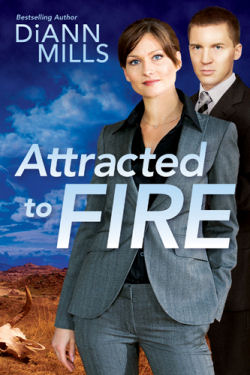
Award-winning author DiAnn Mills is a fiction writer who combines an adventuresome spirit with unforgettable characters to create action-packed, suspense-filled novels. DiAnn’s first book was published in 1998. She currently has more than fifty books published. Her titles have appeared on the CBA and ECPA bestseller lists and have won placements through the American Christian Fiction Writer’s Carol Awards and Inspirational Reader’s Choice awards. DiAnn won the Christy Award in 2010 and 2011. DiAnn is a founding board member for American Christian Fiction Writers and a member of Inspirational Writers Alive, Romance Writers of America, and Advanced Writers and Speakers Association. She speaks to various groups and teaches writing workshops around the country. DiAnn is also the Craftsman mentor for the Jerry B. Jenkins Christian Writers Guild. She and her husband live in sunny Houston, Texas. Website: www.diannmills.com |
|
DiAnn DirectWriting Witty Dialogue |
|
|
Readers devour dialogue. They want to hear what the characters have to say and how they say it. They want to learn about the characters’ problems, the plot, and all the exciting twists and turns of the story. This month is Part I of a two-part series on writing dialogue that sparkles. Dialogue is not written to take up word count. It’s there to accomplish a purpose. Good dialogue is fresh, exciting, and oozes with tension and conflict. Some fiction experts claim that dialogue’s purpose is to move the story along or enhance characterization, but I prefer what Gloria Kempton says: “Dialogue’s purpose, and there is no exception to this, is to create tension in the present and build suspense for what’s to come . . . Effective dialogue always, always delivers tension.” If a writer’s dialogue does not accomplish this, then she should hit DELETE or rework the passage. Unfocused dialogue indicates an amateur writer. The number one rule to writing witty dialogue is to understand that dialogue must be in character. Only a unique character can say what has been written. Never cut and paste dialogue from one character to another. This signifies talking heads with no clarity in word choice or actions that define the character. Well-written dialogue does not need a tag (said). The reader knows who is speaking. The techniques required to create memorable and witty dialogue begin with characterization―knowing the character inside and out. Best-selling writers understand that this step can’t be avoided or eliminated. Before I begin a novel, I write pages of backstory. I want to know what has gone on in the lives of my protagonists and antagonists before page one. This allows me to deepen characterization, weave a tighter plot, and compose effective dialogue. Sometimes I close my eyes and type what the character is saying. I even have conversations with my characters while placing my characters in as many different settings as possible. When writers discover what motivates characters and why, the characters’ problems and goals become more evident. Characters have unresolved issues and are preoccupied with their problems and goals. The dialogue needs to reflect this in inner and outer dialogue. Understand characters’ emotions and how body language is used to identify them. Emotions are often revealed in dialogue. Look for ways to make sure the dialogue is in conflict―even between characters who are normally in agreement. When a writer has a good understanding of body language, she can compose effective dialogue that uses nonverbal communication and unique gestures. Communication experts state that up to 90 percent of communication is nonverbal, which helps the writer to show and not tell. |
Silence is an effective tool in dialogue. Use gestures and body language to relate what the silent character is feeling. The cliché “What you aren’t saying speaks louder than what you are saying” is true in writing effective communication. Brilliantly written dialogue is like an explosion in your manuscript. Have the characters begin to speak as soon as possible. Get them involved in dialogue with characters who challenge them, disagree with them, scare them, love them, etc. In this way, the reader can identify the main character and begin to form the crucial sympathetic bond. It’s all about characterization. Plot flows from characterization along with tension, conflict, and, yes, dialogue. Establish a vocabulary for your characters and stick with it (unless there is a distinct reason for changing it). Always think word choice and the ability for the reader to understand the characters. Writers of dialogue must envision the scene―act it out. Put on the dress of the character and let creativity take over. The adventure begins when the character opens her mouth and steps on stage. When witty and unusual conversation pushes the plot toward the finish line, the reader will want to read the writer’s next book . . . and the next. Book recommendations: Next month we’ll talk about subtexting—what it means and how to incorporate this tool into dialogue. 
|
|
|
|
|
|
|








